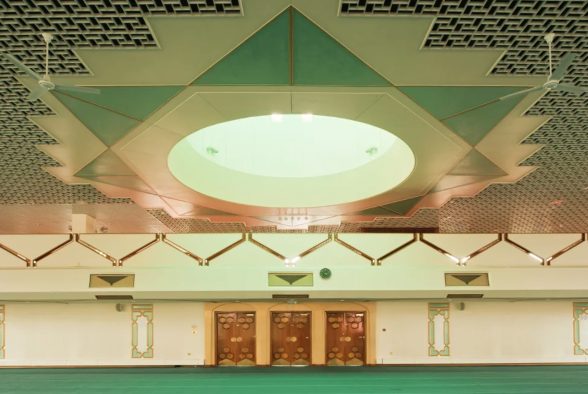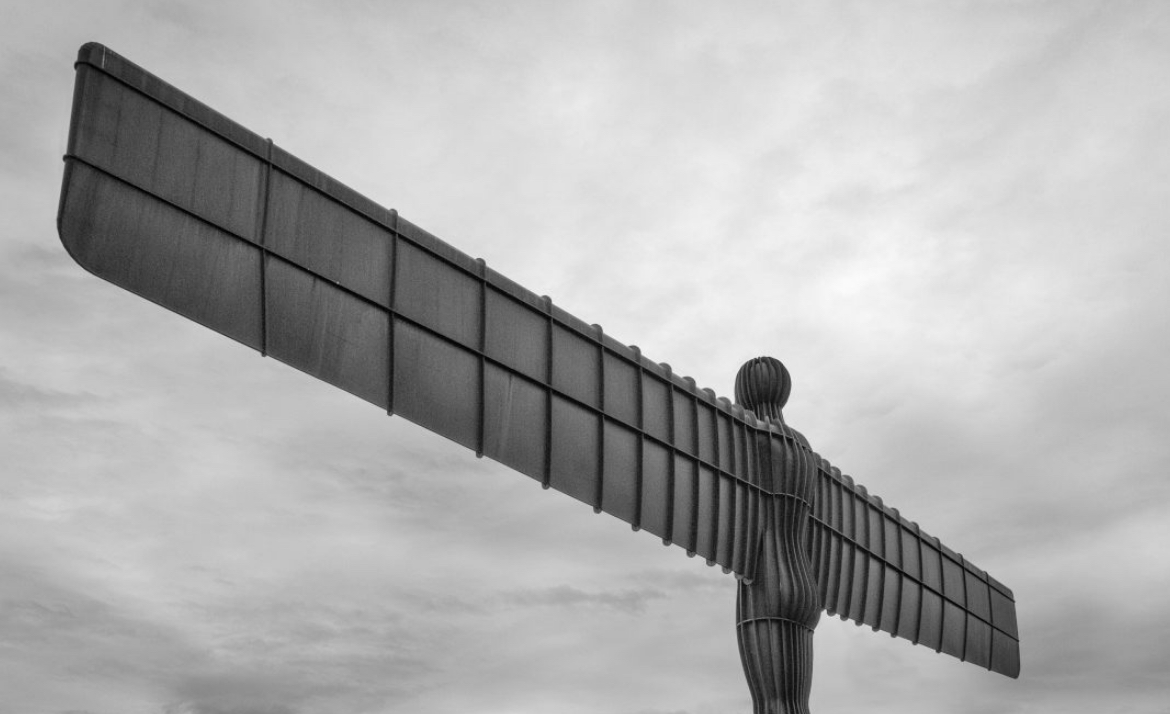This website uses cookies
This website uses cookies to enable it to function properly and to analyse how the website is used. Please click 'Close' to accept and continue using the website.



Image credit: Historic England
Glasgow Central Mosque, the first and largest purpose-built mosque in Scotland, has been listed at Category A by Historic Environment Scotland following a public consultation and backing from C20 Society. Designed by architects W.M. Copeland & Associates in 1977, later completed by Coleman Ballantine Partnership and opened in 1984, the building is notable for its Postmodern style which reinterprets traditional Islamic architectural features and motifs.
The first recorded mosque in Scotland opened in 1944; early examples generally repurposed existing buildings for worship, like former churches, schools and private houses. Only a very small number were purpose-built, with converted premises still making up the majority of mosques today – 13 of which are listed in Scotland.
Britain’s only other post-war mosque to be nationally listed is the Islamic Cultural Centre and London Central Mosque, in Regents Park. Designed by Sir Frederick Gibberd and Partners between 1970-77 and Grade II* listed in 2018, this similarly sought to combine the architectural traditions of British Modernism and historic Islamic forms.

Image credit: Historic England
Development
The Glasgow Central Mosque (GCM) was built for the Jamiat Ittehad ul Muslimin (the Muslim Mission), an organisation that was established in Scotland in 1933 by the efforts of early migrants from India, many of which had settled in the Gorbals area of Glasgow.
The idea of a purpose-built mosque for the community had begun as early as the 1950s after an earlier mosque, located in a converted tenement building, was demolished during the widespread clearance of the Gorbals area in the 1960s. Plans for the new mosque were finally approved in 1977, to be located on a large area on the southern bank of the River Clyde, on the site of the cleared former Adelphi Distillery. Work began in 1979 with the building project cost around £2.5 million; it was financed by the Jamair Itthad-ul-Muslim, Glasgow’s Muslim community and as well as through donations from the Prince of Mecca and the Major of Jeddah in Saudi Arabia.

Image credit: Historic England
‘A mosque for Scotland’
Glasgow Central Mosque is composed of two main rectangular volumes linked by a gallery and set around a central courtyard. It features a prominent glass dome above the large prayer hall and a tall concrete minaret which pierces through the linking gallery. The red brick, pigmented red concrete, and terracotta tile construction deliberately reference the red sandstone traditionally used in many of Glasgow’s tenements and prominent buildings. In keeping with the ambitious aims of the project to create a ‘mosque for Scotland’, the building is of a substantial scale and is Scotland’s largest mosque, with capacity for up to 1,500 worshipers.
The building bears many features found in Islamic architecture throughout the world. This includes the use of a courtyard plan form with central gathering space and garden, the prominent entrance iwan featuring the distinctive murqarnas, the dome, minaret and the repeated use of the four-pointed arch shape for the openings. The incorporation of a small Arabesque style garden at the north of the courtyard follows traditional Islamic architecture found in the Middle East, South Asia, Southern Spain, North Africa and elsewhere and is a rare feature in urban mosques of the 20th century, with no other examples known in Scotland.

Image credit: Historic England
The architects who designed the mosque, Stockport based, W.M. Copeland & Associates, are reported to have travelled to Turkey and Jeddah, Saudi Arabia as part of the design process. William Copeland of the firm had also designed the dome and minaret for the second purpose-built mosque in the United Kingdom, the Birmingham Central Mosque built from 1968 and completed 1982
The opening of the mosque in May 1984 was attended by the Imam of the Holy Kaa’ba in Mecca and Dr Abdullah Oman Naseef, secretary general of the World Muslim League as well as representatives of Scotland’s Christian, Hindu,Jewish and Sikh communities.
According to statistics compiled in 2024 there are around 92 mosques in Scotland, with only ten of these understood to be purpose-built buildings. A major later example of a purpose-built mosque in Scotland is the Edinburgh Central Mosque (designed 1987 by the Iraqi-born architect Basil Al Bayati, opened 1998), with the majority of the other purpose-built mosques dating to the early 21st century.

Image credit: Historic England

Become a C20 member today and help save our modern design heritage.